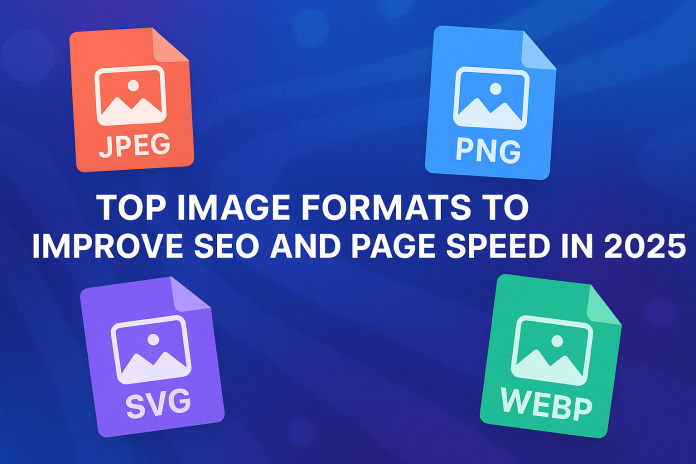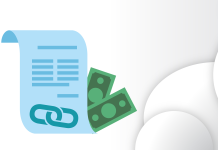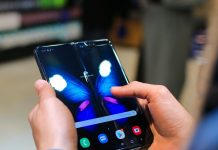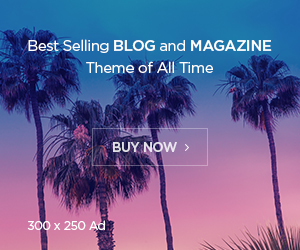By 2025, it will no longer be optional to deliver fast-loading, eye-catching websites. Page speed and user experience are essential factors in the ranking system of search engines, notably Google. And what do you know? Inefficient images are one of the most significant contributors to a site’s slow performance.
Using the right image formats can significantly improve both SEO performance and page speed. This comprehensive guide will examine the most suitable image formats for 2025, their benefits, and how to utilize them effectively on your site.
Why Image Optimization Matters for SEO and Speed
And now, before jumping into the subject of image formats, let us briefly summarize why image optimization is such an important aspect of SEO:
| Benefit | SEO & Speed Impact |
| Faster Load Times | Google ranks faster sites higher and reduces bounce rates |
| Better Core Web Vitals Scores | Improves Largest Contentful Paint (LCP) and First Input Delay (FID) |
| Higher Mobile Rankings | Mobile-first indexing demands faster mobile experiences |
| Improved Crawl Efficiency | Smaller images mean faster crawling and indexing |
| Enhanced User Experience (UX) | Users stay longer and interact more on fast-loading pages |
The best image formats that can help you score high in SEO and achieve blazing-fast page speed will be discussed.
1. WebP — The Current SEO Champion
In 2025, WebP is already considered to be the most efficient site image formats. It was created by Google and has an excellent compromise between the quality of the image and the compression.
Key Benefits:
- As small as 30 percent less JPEG and PNG with no perceptible quality loss.
- Transparency (alpha channel) such as PNG.
- It supports lossy and lossless compression.
- It supports the majority of browsers, such as Chrome, Firefox, Safari, and Edge.
When to Use WebP:
- Practically every image on the site: the photos of products, the images in the blog, the hero banners, etc.
- Clear pictures in which PNG was conventionally employed.
SEO Impact:
- Quicker loading.
- Improved core web vitals.
- Responsive designs are optimized for various screen sizes.
2. AVIF — The Next-Gen Format for Maximum Compression
AVIF (AV1 Image File Format) is rapidly becoming a favorite solution for websites that require maximum compression without compromising quality. AVIF is based on the AV1 video codec, which results in smaller file sizes than WebP.
Key Benefits:
- As much as 50 percent smaller than JPEG and WebP.
- High-quality, excellent compression.
- HDR (High Dynamic Range)-Support and transparency.
- Backed by popular browsers (Chrome, Firefox, and, in the near future, Safari).
When to Use AVIF:
- Hero images of high resolution.
- In product galleries where sharpness is important.
- Websites that want to achieve the shortest loading speeds.
SEO Impact:
- Extremely small images.
- Improved Time to first Byte (TTFB) and Largest Contentful Paint (LCP).
- Assists in passing the Google Core Web Vitals limits.
3. JPEG XL — The Emerging Contender
Another image formats that is shaking up 2025 is JPEG XL. It is developed as the improved version of the JPEG and it offers a high level of compression and compatibility.
Key Benefits:
- High quality and small file sizes compared to JPEG or WebP.
- JPEG back compatibility (converts easily).
- Transparency and animations.
- Quick encoding and decoding (suitable for dynamic content).
When to Use JPEG XL:
- Sites having both old and new audiences.
- Sites with substantial content (e.g. blogs, eCommerce, magazines).
- Where it is essential to be backward compatible.
SEO Impact:
- Lower image payload and easy adoption.
- Excellent to raise page speed scores in hybrid conditions.
4. SVG — The Best Format for Logos & Icons
SVG (Scalable Vector Graphics) is not a standard photo format, but it plays a crucial role in the performance of websites, particularly in design.
Key Benefits:
- Resolution-independent – scales to any screen.
- Small files of simple graphics and icons.
- Easy to edit using CSS and JavaScript (this is awesome when animating).
- Textual- it is easy to compress and search.
When to Use SVG:
- Logos.
- Icons.
- Illustrations and vector art.
- Infographics with simple shapes and text.
SEO Impact:
- Super-fast load speeds.
- Sharp appearance on retina displays.
- Accessible for search engines (some content within SVG is crawlable).
5. PNG — Still Useful for Specific Cases
It is not as lightweight as WebP or AVIF; however, it is suitable for use under some circumstances.
Key Benefits:
- Perfect pixel representation (lossless).
- Support for complete transparency.
- Broad compatibility with all browsers and systems.
When to Use PNG:
- Images that require absolute clarity (such as text-intensive images or diagrams).
- In the case of requiring pixel-accurate representation.
- Clear pictures when using modern formats is not possible.
SEO Impact:
- The newer formats are lighter than it is, hence, may cause a page to be slow when overused.
- Use it where quality is unacceptable.
6. JPEG — Still Relevant for Legacy Use
Although it is an old standard, JPEG continues to drive millions of websites because it offers vast compatibility and is very simple.
Key Benefits:
- Photos with small files.
- Supports all major browsers, including older versions.
- Simple to make and to modify using practically any tool.
When to Use JPEG:
- Websites that have legacy browser requirements.
- Fast loading of images in blogs or CMSs that do not support AVIF/WebP
SEO Impact:
- Ok, when optimized (with compression tools).
- Not as fast as AVIF/WebP, but with optimization, it can be used.
Best Image Optimization Practices for 2025
Regardless of the format you use, these are optimization recommendations that you cannot ignore in terms of speed and SEO:
Compress Images Before Upload:
Use tools like:
- TinyPNG (WebP, PNG, and JPEG)
- app (AVIF, JPEG XL, and WebP)
- ImageOptim (macOS)
- io (for bulk optimization)
Use Responsive Images:
The best approach is to include the srcset and sizes attributes in your HTML code, ensuring that the proper image is presented based on the device and screen.
Example:
<img src=”image.webp”
srcset=”image-400.webp 400w, image-800.webp 800w”
sizes=”(max-width: 600px) 400px, 800px”
alt=”Optimized Image”>
Leverage Lazy Loading:
Lazy loading does not load images until a user scrolls to them, making a page load faster.
Example:
<img src=”image.webp” loading=”lazy” alt=”Sample Image”>
Utilize CDN Image Delivery:
Use Content Delivery Networks (CDNs) like Cloudflare Images, Imgix, or ImageKit to provide optimized images to an international viewer..
Comparison Table: Best Image Formats for SEO & Speed (2025)
| Format | Best Use Case | Compression | Browser Support | SEO Impact | Transparency | Animation |
| WebP | General website use | High | Very High | Excellent | Yes | Limited |
| AVIF | Maximum compression, high-res images | Very High | Growing (Good) | Excellent | Yes | No |
| JPEG XL | Modern images with backward support | High | Growing | Very Good | Yes | Yes |
| SVG | Icons, logos, illustrations | Vector | Excellent | Excellent | Yes | Yes |
| PNG | Transparent images, diagrams | Low | Excellent | Moderate | Yes | No |
| JPEG | Photos, legacy support | Moderate | Universal | Moderate | No | No |
How to Choose the Right Image Formats
| Goal | Best Format(s) |
| Fastest page speed | AVIF, WebP |
| Widest compatibility | WebP, JPEG |
| Transparent images | AVIF, WebP, PNG |
| Best for icons & logos | SVG |
| Highly detailed photos | AVIF, JPEG XL |
| Animation | SVG, JPEG XL |
Conclusion: Choose Smart Image Formats for SEO Success in 2025
In 2025, the intelligent use of new image formats will be a non-negotiable requirement for websites that want to dominate search results and make users happy.
You can do it by adopting next-gen formats such as WebP, AVIF and JPEG XL:
- Reduce page load times by a considerable margin.
- Enhance ranking in search engine optimization.
- Improve mobile experiences.
- Make your site future-proof.
Although older formats, such as converter HEIC to PNG and JPEG, can still play niche roles, newer formats are definitely the leader in terms of performance and SEO.


















